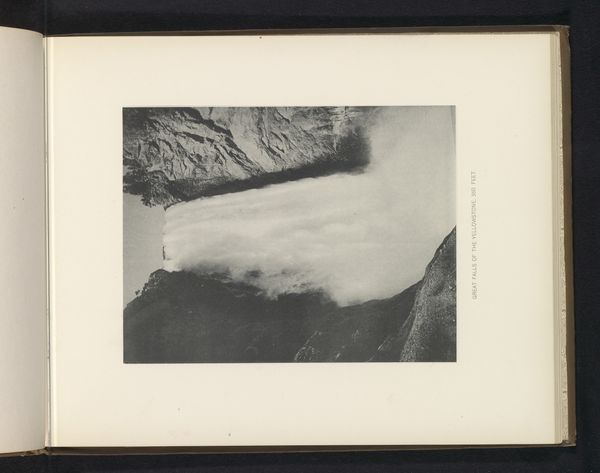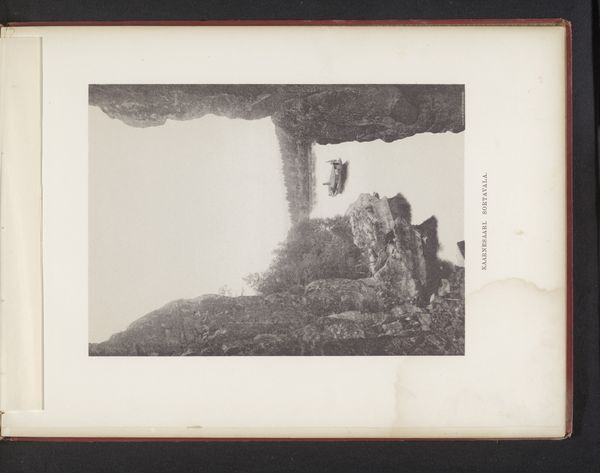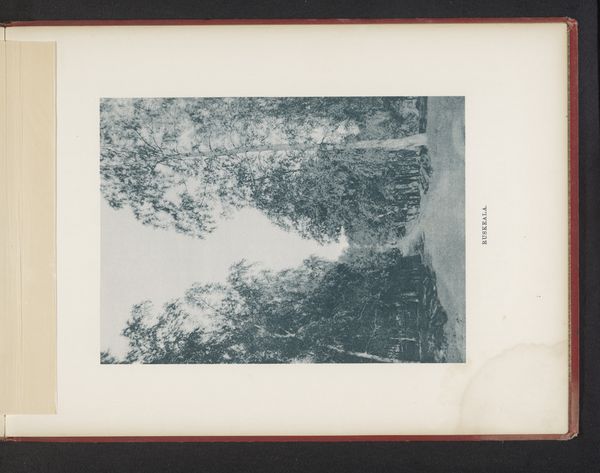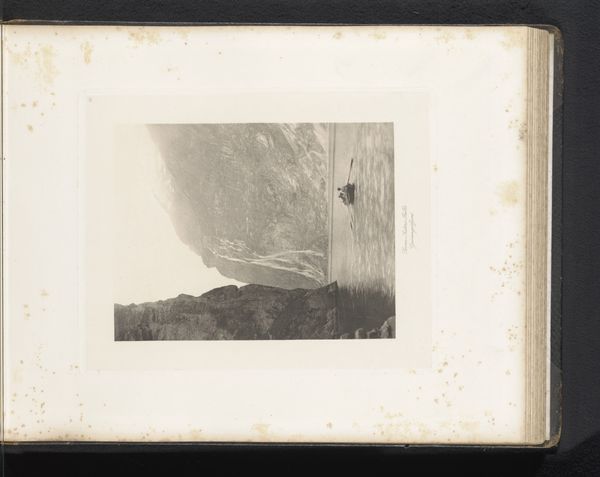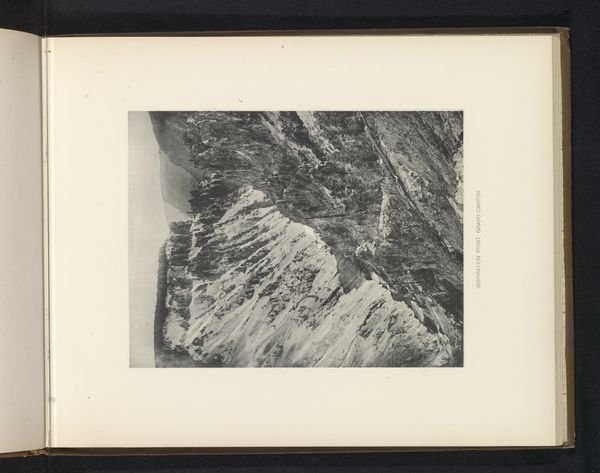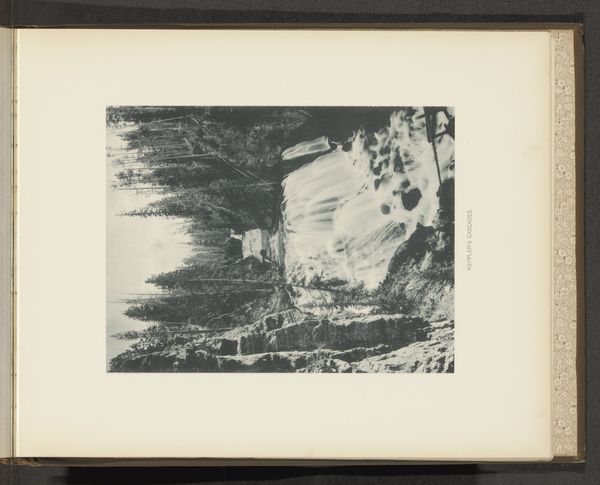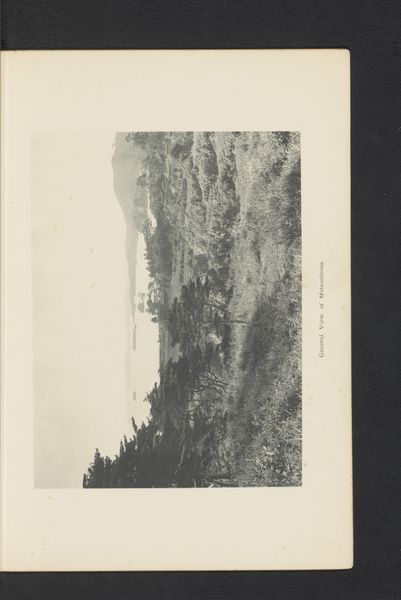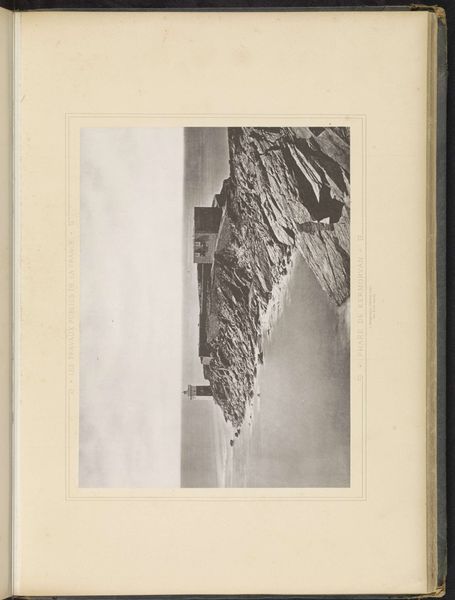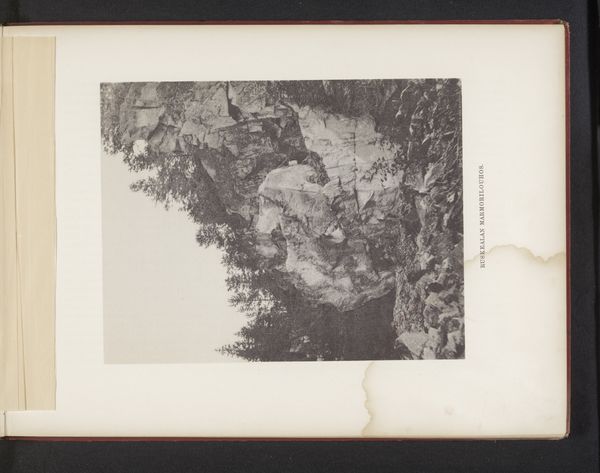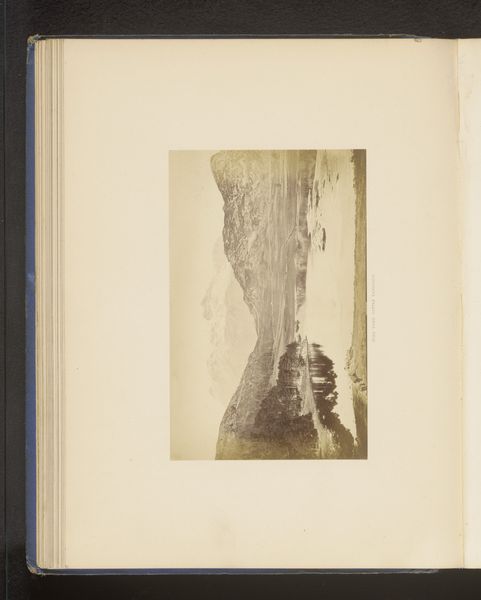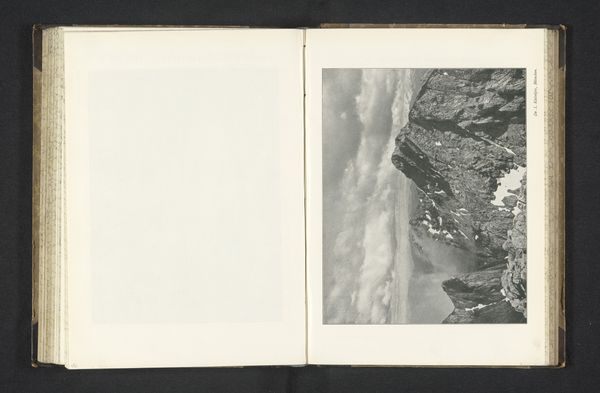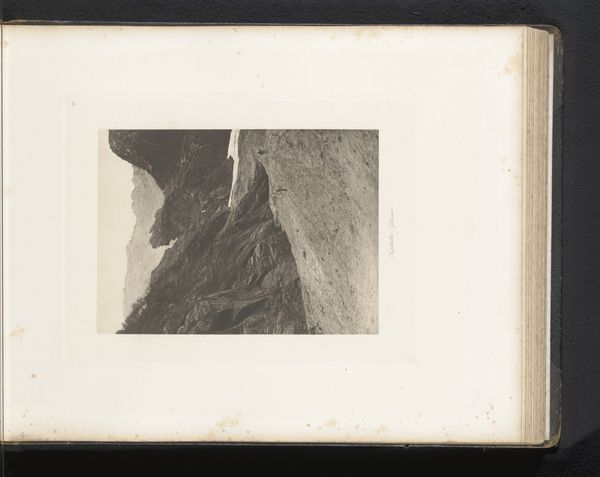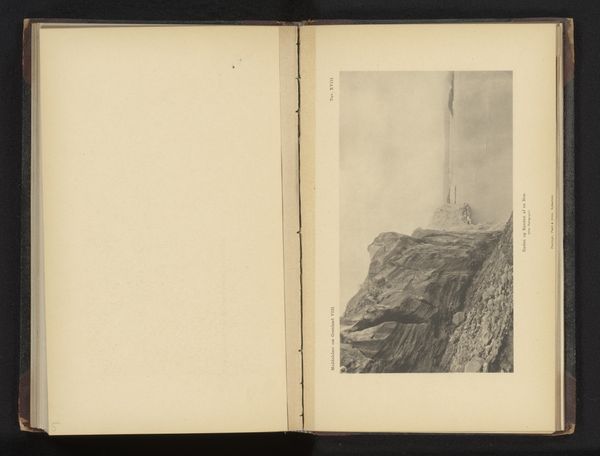
print, photography
#
pictorialism
#
photograph of art
# print
#
landscape
#
photography
Dimensions: height 224 mm, width 163 mm
Copyright: Rijks Museum: Open Domain
Curator: Let’s take a look at “Rocks on Water,” a print photograph made by Impi Backman around 1888 to 1893. It’s quite striking. Editor: Yes, it evokes a strong feeling of stillness, a profound calmness radiating from the monochromatic palette and the way the water mirrors the rocky precipice. Almost otherworldly. Curator: I'm particularly drawn to Backman's mastery of the pictorialist style here. Consider the labor and deliberate process to create such a dreamy, painterly effect in photography. He's pushing against the medium's traditional boundaries. The soft focus, achieved through manipulation of the lens and printing process, serves to emphasize the emotional tone over precise documentation. Editor: Absolutely. And think about Finland at this time – still part of the Russian Empire, searching for a distinct national identity. Doesn’t the landscape itself become a site of cultural expression, a silent assertion of belonging to this specific place? The ruggedness of the rocks, the reflective water – perhaps symbolizing both resilience and introspection of a people. Curator: That reading is enriched by considering the materiality. This is not just an instantaneous capture but a constructed image, mediated through the darkroom. Each print would have been unique, depending on variables like exposure time and chemical development. Were Backman exploring ways to individualize his work at the rise of mass culture? Editor: I also wonder about the choice to include that reflected text, it reads ‘Kaarnesaari. Sortavala’ in thin white typeface on the right edge. It functions to both label and assert location as an important part of the photograph's narrative. The text itself is almost ephemeral like the photograph itself and, dare I say it, our human impact on the Finnish wilderness. Curator: So it brings up issues about whose history gets told and from what angle. Looking at the paper it's printed on, the staining here adds another dimension of process. Perhaps evidence of its journey, or its handling by many hands? Editor: That kind of accidental mark-making almost echoes the wildness in the actual image and how even these ‘errors’ connect us to real histories of place. Curator: Thinking about production practices adds an extra interpretive lens when we encounter artwork with photography techniques such as this. Editor: By framing landscape through political and cultural forces that influenced art production, it shows a new vantage point from which the land could reflect stories of a culture’s becoming.
Comments
No comments
Be the first to comment and join the conversation on the ultimate creative platform.
